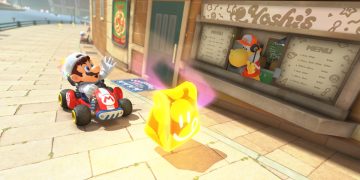Sony Interactive Entertainment recently unveiled a fascinating video showcasing Mark Cerny’s in-depth presentation on the PlayStation 5 Pro at the company’s headquarters. Cerny, the system architect, took this opportunity to delve into the technical architecture of the upcoming console and address some misconceptions circulating about its capabilities. He focused particularly on clearing up what he called “FLOPflation,” a term born from a leaked yet incorrect figure of 33.5 TFLOPs. This mix-up happened because a source mistakenly assumed the new console was more heavily based on RDNA 3 architecture.
In fact, the PS5 Pro operates at 16.7 TFLOPs, a bump up from the PS5’s 10 TFLOPs. Additionally, one correct leak before the official reveal suggested the PS5 Pro could reach 300 TOPS using 8-bit calculations. 16-bit calculations, on the other hand, can achieve 67 TFLOPS. As Cerny clarified, the PS5 Pro’s RDNA 2.X architecture, a customized adaptation of AMD’s RDNA 2, incorporates several RDNA 3 features but retains enough of its original structure to avoid needing significant alterations to existing software.
The seminar, available to watch on YouTube, highlights how significant advances have been made in the PS5 Pro’s Ray Acceleration structure, particularly with the use of the BVH8 (Bounding Volume Hierarchy). This has enhanced “stack management in hardware,” leading to more efficient graphics shader code management on the new console.
When it comes to 3D rendering, BVH refers to grouping bounding boxes to process graphics computations, such as reflections, more efficiently. The PS5 used BVH4 for ray tracing (RT) calculations, but now, with the PS5 Pro, BVH8 allows for more sophisticated RT calculations. Similarly, the Ray Intersection Engine can now handle intersections for 8 boxes and 2 triangles, a notable upgrade from the PS5’s capacity of 4 boxes and 1 triangle.
These enhancements in the PlayStation 5 Pro’s ray tracing capabilities, thanks to a highly customized RDNA 2 GPU architecture, lead to noticeable improvements in rendering curved and textured light reflections, albeit with modest improvements in handling shadows and smooth surfaces.
The full 37-minute video offers a treasure trove of detailed information for those keen to dive deeper. It’s a rich resource for understanding not just the PS5 Pro but also the broader console market dynamics and the technological innovations that are driving competition forward.














































